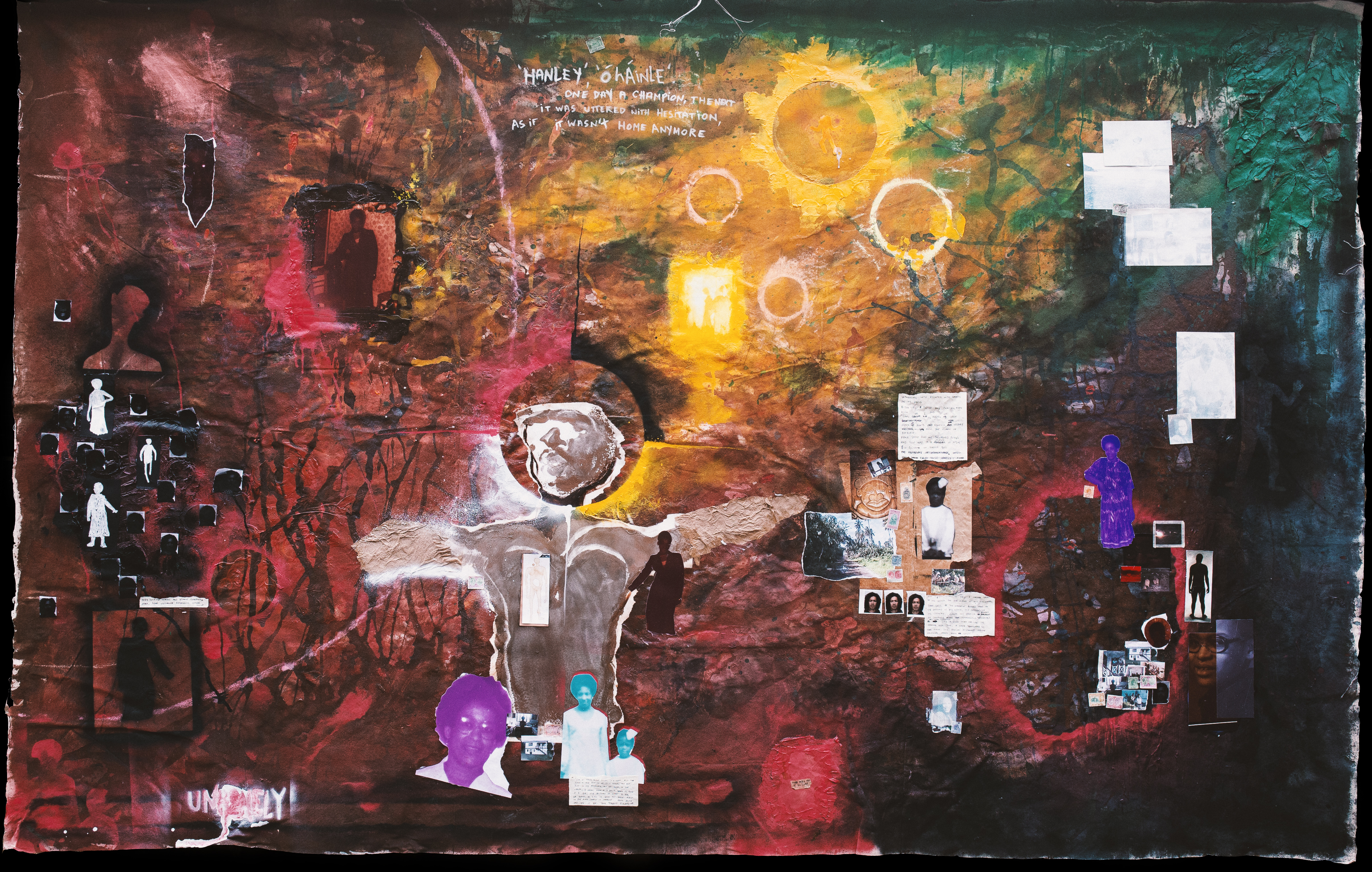







‘Twilight of the Unhomely’ (2021)
‘Twilight of the Unhomely’ is a reinterpretation of an affidavit written by a *potential* family ancestor – a ‘free coloured man and house carpenter’ – named John Hanley. I found his affidavit online in an old parliament document named ‘Papers Relating to the Treatment of Slaves in the Colonies’ (1818). The testimony details the treatment of 2 slaves named Richard and David, owned by a man named Thomas John Cottle, after they’d been heavily beaten for being in posses- sion of stolen goods. Hanley’s recollection tells us that he had witnessed Richard and David at a ‘masquerade’ – a Caribbean tradition brought over by enslaved Africans to honour their ancestors and deceased and soon turning into a way to mock/curse their oppressors. Given that Richard and David were badly beaten some days before the ceremony, it could be implied that the masquerade may have been reactionary. This gives an idea as to why Richard and David ‘danced a reel unmasked’ dressed as Buonaparte and his aide-de-camp.
My reinterpretation aims to tell the story of John Hanley whose inner conflict is ignited as he encounters a mental crossroads as the masquerade unfolds before him. This masquerade is, in actuality, a ritual that brings John Hanley into contact with his own ancestors and future de- scendants – the people from both sides of his lineage who interrogate the political meaning of his identity within these dual contexts. John Hanley falters at this interrogation and so sentenced to bear a curse on the family name, with intergenerational effects burdening them to question their identity indefinitely; A pattern bound to repeat until somebody breaks it.
‘Twilight of the Unhomely’ is a story that operates across many different and intersecting time- lines, it becomes the product of these many ‘rhizomatic’ moments overlapping in the same time and space, thus creating the initial, unending ripple throughout a family’s timeline. The space created in this specific moment is very key to the construction of identities – as an individual, as a family and as part of the wider Black diaspora.
My reinterpretation aims to tell the story of John Hanley whose inner conflict is ignited as he encounters a mental crossroads as the masquerade unfolds before him. This masquerade is, in actuality, a ritual that brings John Hanley into contact with his own ancestors and future de- scendants – the people from both sides of his lineage who interrogate the political meaning of his identity within these dual contexts. John Hanley falters at this interrogation and so sentenced to bear a curse on the family name, with intergenerational effects burdening them to question their identity indefinitely; A pattern bound to repeat until somebody breaks it.
‘Twilight of the Unhomely’ is a story that operates across many different and intersecting time- lines, it becomes the product of these many ‘rhizomatic’ moments overlapping in the same time and space, thus creating the initial, unending ripple throughout a family’s timeline. The space created in this specific moment is very key to the construction of identities – as an individual, as a family and as part of the wider Black diaspora.



